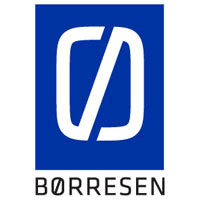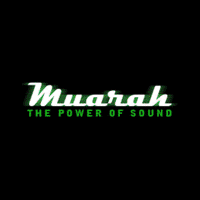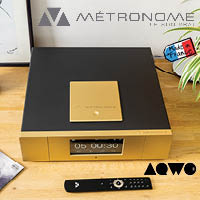Audioengine HD6 Premium Powered Speakers
The HD6 is the latest powered speaker from Audioengine, the company founded by two young American audio entrepreneurial dynamos, Dave Evans and Brady Bargenquast.
I've been impressed with Audioengine's digital products and speakers from its startup over ten year's ago. In the here and now, I'd call today's Audioengine a 'modern legacy' company.
Their new HD6 is a handsome beast and comes in satin black, walnut and the lovely cherry finish shown below in our review pair.
The HD6 is a total audio solution. Audioengine describes the HD6 as a '2.0 powered bookshelf-style speaker system featuring wireless and digital optical inputs. We build all this goodness into the left speaker cabinet to make it super-easy to connect your smartphone, tablet, computer, TV, network player - or any other audio product.' The powered left channel, weighs in at 8kgs. The passive right channel, 5.5 kgs. Included are detachable grills held firmly in place with hidden neodymium magnets.
Audiophiles purchasing this speaker will probably hurdle Bluetooth and go straight to a wired solution. Civilians, the speaker's bread and butter audience, will opt for a quick fix with Bluetooth. This audiophile did.
I was listening within minutes to Tidal HiFi's iOS app streaming on my iPhone 6S Plus via the HD6s Bluetooth aptX codec. Bluetooth's come a long way. Don't let any audiophile snobby git tell you otherwise. The HD6s were perfectly happy and played flawlessly giving this listener the majesty of Beethoven's Symphony No. 7 (Dorati/LSO) and the new gem from Radiohead, A Moon Shaped Pool. Both recordings need lots of power and detail to give the full emotional wallop. Tidal and Bluetooth provided the HD6 both in spades. Most of my listening was via streaming. Dreadful Apple Music, heard flat and uninspired by the resolution of the speakers, and the musically satisfying Tidal HiFi. I spent many hours using Bluetooth. Not one dropout.
As a wired solution, the speaker includes 3.5mm mini-jack, RCA L/R and digital optical (SPDIF). Outputs include variable line-out w/2.0V RMS max output, 47ohm output impedance. All the wiring needed is packaged with the speakers. You can go outboard DAC/FireWire, Toslink, or directly to your computer.
The onboard 150 watt amplifier is an analog dual-class A/B monolithic. Each speaker has two drivers, 1 x 5.5" Kevlar woofer and a 1" silk dome tweeter. I figured Class D amplification would pull duty but some serious thinking went into making the sound of these speakers something above what was the Class D normal -- a little rough and ready from an inexpensive, small footprint.
The HD6 is a digital powerhouse. Audioengine says its 'AKM AK4396A DAC, is widely known for its low-noise and high-fidelity. The optical input configures the AK4396A as a bit-perfect 24-bit DAC, which will process sample rates up to 192kHz natively.'
Do not underestimate the power of driver/component break in. Audioengine's estimate of 40 hours is spot on. Big changes occur in bass accuracy and soundstage after ten hours or so, but it's the layering of musical voices after 30 plus hours that best represents a broken in HD6. Image compression and frequency inconsistencies disappear and a beautiful musical canvas remains.
The lowest frequency produced is said to be near 50 Hz. That sounds about right. No really deep bass from the small enclosure, but the rear port releases bass energy that is firm and tuneful. It's not just a thwack like so many powered speakers I've heard.
I tested my bass theory with the bass drum ff solo beat with two tubas providing the pitch about five minutes in on The Adoration of the Earth from Stravinsky's Rite of Spring with Esa Pekka Salonen and the LA Phil on DGG. This recording is one of the best sounds you'll ever hear in the glorious acoustic of Disney Hall. The HD6s were magnificent in replicating the energy, volume and timbre, if not the last ounce of low pitch resonance. But damn effective.
Placing for best results is always a problem, especially for skittish, high end speakers. The HD6s like nice stereo separation, but placement within most rooms is fairly benign. They'll play loud in large rooms -- oh boy, do these speakers love to be partied, and no soundstage implosion the harder you drive them. As such, they are a refined high end speaker or a head banger for good times. Your choice. My musical placement? Tweeter ear hight (stands, please) firing straight out. Toeing in 10 degrees is fine, too, if you like a tighter soundstage. Lifestyle placement choices are cool. Sometimes, you gotta just look good for the guests.
When I was feeling pretty happy with the results after break in and plenty of listening, I setup the speakers on 24" Target stands. They did make a difference in audiophile terms and would be my choice for setup. But that would be missing half the HD6 fun. They love the fun and don't give a fig about audiophile terms while they are doing it. So, mix and match. Audioengine gives you the best of both worlds. Demure girl, naughty girl.
Once serious listening began, the HD6's sweet quality became apparent. I discovered a beautiful cantabile style I had not heard on previous Audioengine models. While listening to Anne Sophie Mutter's superb Beethoven Sonatas on DG, her intensity, even in the quietest passages, is always difficult to capture. Here, recording imitated life. Live, Mutter's violin playing can make you weak in the knees. The HD6s surprised the hell out me. I've heard the Mutter CDs in umpteen systems, some in the 100K plus realm. Even in comparison with those lofty setups, the HD6s in full reveal mode did not disappoint.
No matter the genre, the speakers captured the musical essence of the repertoire. String quartets, brass ensembles, full orchestras, electronica, straight ahead jazz and various pop music all were grounded in their genres and musical hangouts. Lots of speakers throw a generic sound scape -- Audioengine's carefully matched drivers allow for variances in mood and timbres.
A mini me, solid aluminum remote is provided. It's perfect. Night mode, mute, volume. Done
SONOS rules my main level, lifestyle system. It's a very beautiful sound, but diffuse as setup. A Soundbar under the 55" Bravia, the miraculous SONOS Sub sulking in the corner (a sub can be attached to the HD6s, BTW) and a single Play:5 speaker sets the stage. The sound is full, rich and detailed, but stereo separation is almost nil. Want flying, opposing violins in correct 18th Century antiphonal setup, look towards Audioengine's much better point source delivery. But, for the casual and the search for musical cool, SONOS is damn hard to beat. You'll be buying the HD6s for completely different musical reasons. Equally valid.
I'm not sure what compelled me to contact Audioengine for a review pair of the HD6s. It's not like their speakers are a first call, audiophile must have. We have touched base at times just to say hi at shows or to review a product. It could have been the recuperation time for a recent injury during which I read anything and everything audio including lots about Audioengine products, or maybe it was just one of those things. Whatever the reason, I'm so glad I did. A quick email to Brady, expedited to Audioengine's Canadian distributor, and one day later they were banging loud and rhythmic tunes as centrepiece on my main floor.
At US$749 MSRP, the HD6s are $350 more than Audioengine's very popular A5+, but that increase gets you a significantly better speaker. Better looks, better fit and finish, and most important, better sound. So, audiophile lifestyle be damned. HD6, you can be my audiophile wingman any day. Cue the Top Gun Anthem.
As a nice gesture, if you buy the speakers directly from Audioengine (website link below) and you're not satisfied, return the speakers within 30 days of purchase and they will refund the full purchase price with no restocking fees.
Further information: Audioengine


























